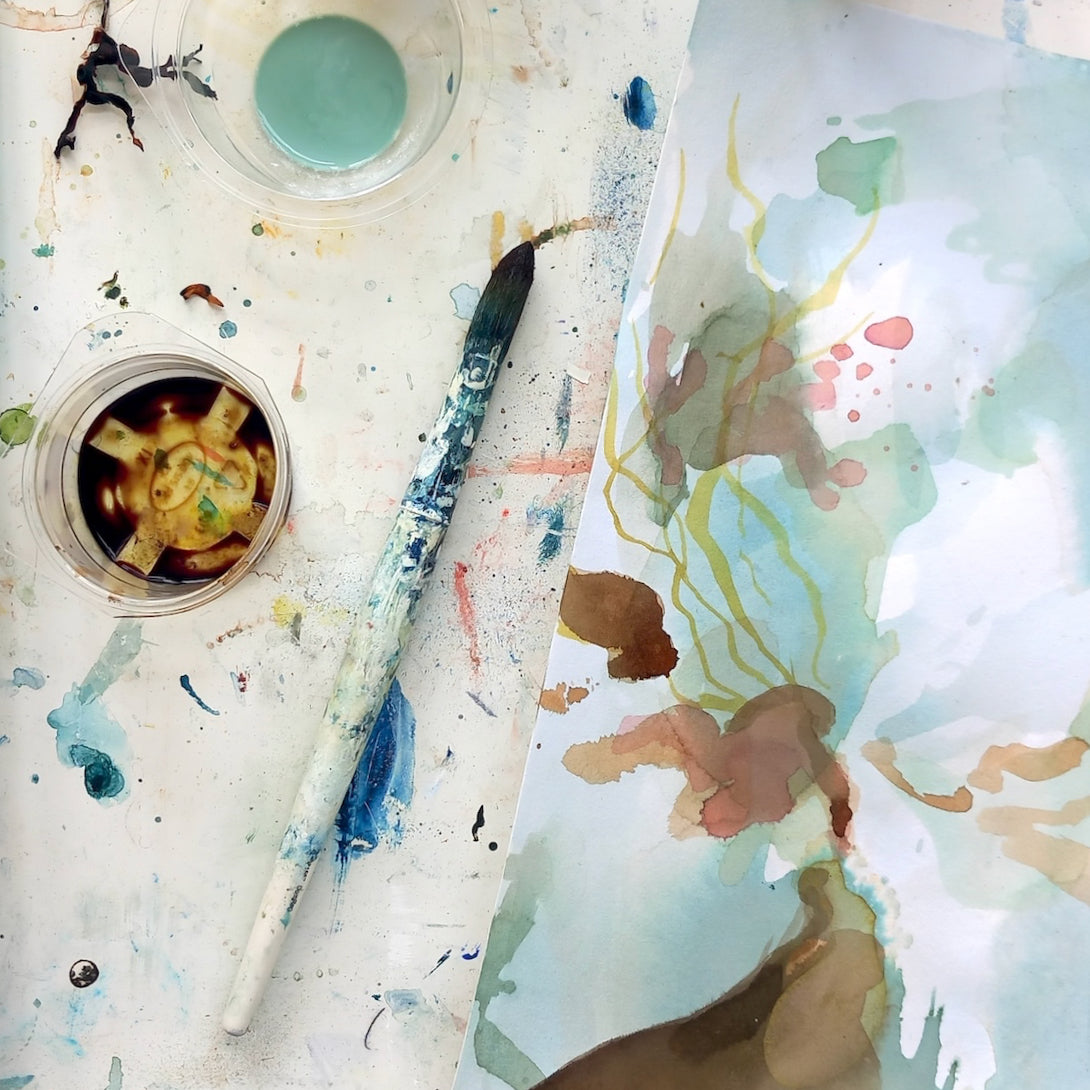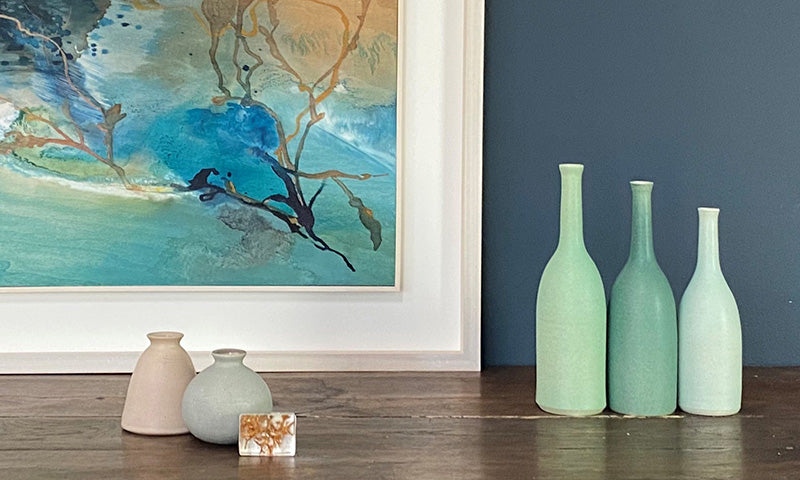Good On Paper: Tara Leaver


Tara Leaver's delicate and atmospheric work has featured in exhibitions at the Byre Gallery since 2021. When I first met Tara and saw her work I was immediately drawn to her beautifully realised underwater scenes inspired by her regular sea swims off the Cornish coast. I also greatly admired the way she succeeded in incorporating the texture of the wooden panels she painted on into the overall composition of the piece. But for this winter's exhibition 'Good on Paper' I set Tara the challenge of working on paper instead of wood.
Here she gives her verdict on the experience:
Paper isn’t your normal medium, how did you find working on it?
I have worked on paper from time to time over the years, although it’s never found a place as a regular part of my practice, and I wasn’t sure whether I’d be able to ‘translate’ my usual ways of working on wood panel and canvas.
I was excited by the brief though - it’s not often you get asked to explore your own subject in any way you like, on a different surface, with a lovely long lead time!
Restricting it to paper - a surface I’m less familiar with - gave me just enough creative constraint to work within, and it turned out to be a fantastic exploratory exercise. I decided to spend the summer doing a deep dive into painting on paper, and called it the Paper Summer Project, which people could follow along with in my emails, on Instagram, and inside my membership for artists.
I was able to try different kinds of paper and make some exciting discoveries about how they each worked with the media I was using, and where they supported or hindered the feel of what I was looking to create.

Did you use different paints on this collection?
I usually work mainly in acrylic, although I’ll add in other media if it feels right, but for these paintings I mostly used watercolours.
Watercolours are one of the most challenging mediums I think, contrary to the common perception of them as an ‘easy’ starting point for learning to paint. There’s so little leeway for error, and once you’ve laid something down, you can’t just paint over it the way you might with acrylic or oils, because the lightness of touch would be lost.
And because of the way I work - always aiming for a light touch and a sense of weightlessness - it was double the challenge!
Did working on paper give you more freedom or did you feel it created any limitations?
I was quite surprised to find that it offered more freedom. In practical terms, paper is less of an investment than the sturdier substrates, so you feel less pressure for every piece to work out!
But more than that, I found that paper actually supported and encouraged my preferred way of working, with that feeling of lightness and movement. It wasn’t easy - I frequently found myself on a knife edge of not quite enough or too much - but that challenge and risk taking element is something I relish in the studio.

Most of your work is inspired by what you observe when you’re sea-swimming, is it the same for these works?
The work is always about being in and around the water. My main interest is in expressing the sensory experience of immersing in salt water, of being weightless and one with it for a little while.
Even though water is heavy, when you let go to it you feel light, physically, mentally, and emotionally - and that lightness of being is what I’m endlessly looking to share in the work. Life on land doesn’t always feel that way - it’s a reminder of the possibility of a different state of being, of holding things more lightly, of being lighter.
All of which to say, yes, these works on paper are still about my favourite subject and place! Working on paper shifted the angle slightly, but I love that about making art - I often talk about how each of my painting collections is like a chapter in a book about living by and in the sea. They carry a signature energy with varying ‘flavours’.

How often do you get into the sea? Is it a year round pursuit or are you a fair weather bather?
I would love to say I swim year round. I kind of do, but the frequency decreases significantly in the colder months!
The cold is actually one of the things I love most about it - it’s significant to my experience of swimming in a way that warm water doesn’t offer, but getting out of it into icy air is much more challenging for me!
I have noticed that when I go too long without immersing, there’s a feeling of being shrivelled and a bit crispy, just like seaweed that’s been out of the water too long. There’s an antsiness that kicks in that can only be relieved by getting back in, similar to the antsiness of going without painting for too long, so I always do eventually.
I know you’ve recently got a puppy, is her presence in the studio having any impact on the way you work?
We’ve been working it out together! I can work with her in there, but it’s hard to go as deep as I’d like into the work when I’m keeping any eye on what’s being chewed or what she might be eating in the garden while I’m lost in paint.
Fortunately, she’s taken to the crate rather well, so sometimes she’s with me in the studio, and sometimes I take a couple of hours for painting alone while she’s snoozing in the crate up at the house.

Would you work with paper again?
Absolutely! Paper and I have developed a relationship now, and I have more ideas I’m looking forward to exploring. It feels exciting to be able to bring this element into my practice, offering me variety and experimentation in the creation process and I how I ‘talk’ about my subject through painting, as well as a different way for collectors to enjoy and own my work.

You normally frame your work, have you had any thoughts about how these works could be framed?
Most of the works on paper I created I think would look best both framed and mounted. The paintings from the Elements Collection would work better without a mount, to make the most of the torn edges and irregular shapes. I always like a simple frame that allows the work to shine.

All Tara's new work will be available from 17th November as part of our Winter online exhibition: 'Good on Paper'.

